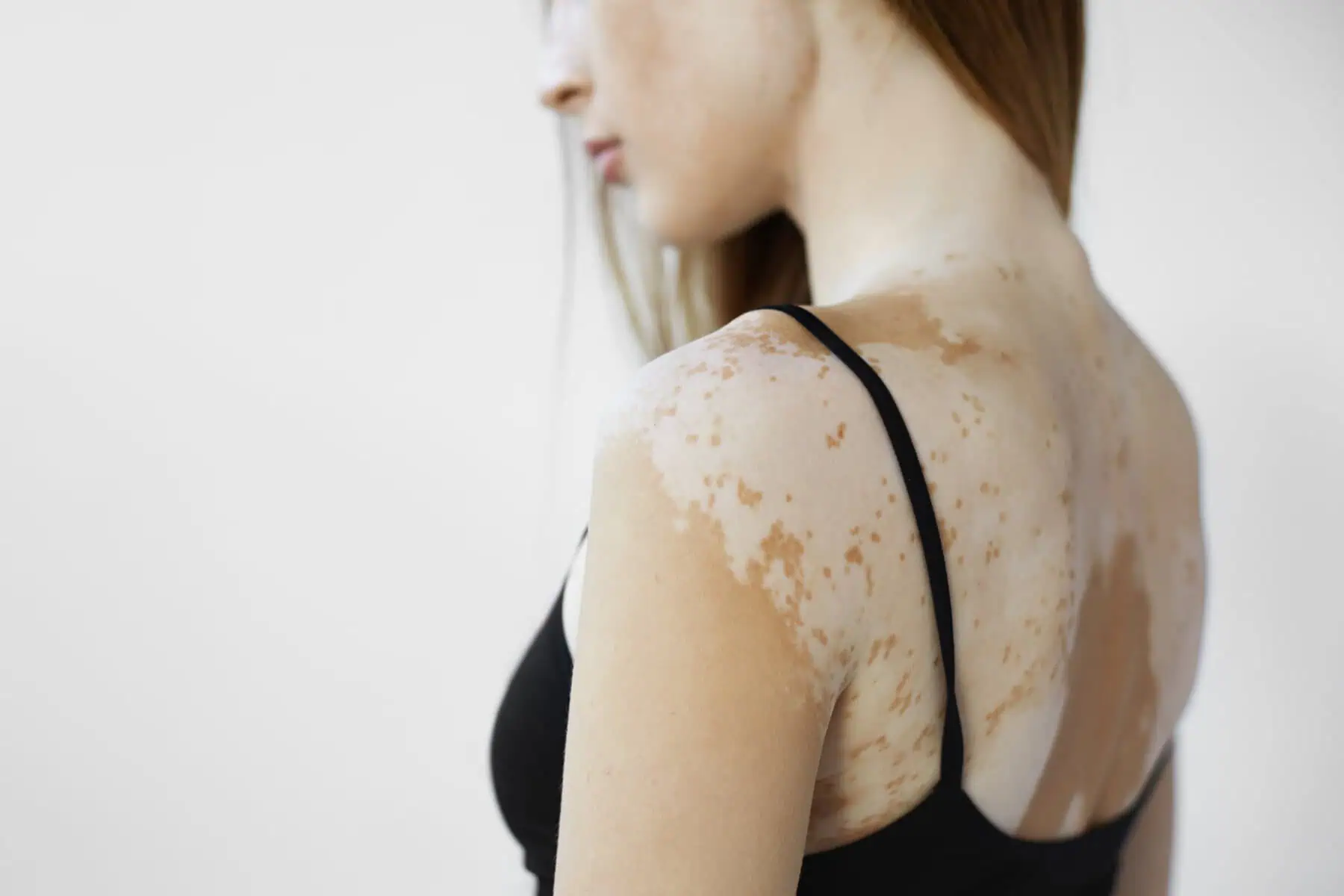Tinea Alba in New York, NY

Tinea Alba in New York, NY
Pityriasis Alba is a common, non-contagious skin condition characterized by hypopigmented skin patches that typically appear on the face, especially in children and adolescents. These white patches on the face are often round or oval and can range in size. Despite its name, Pityriasis Albaa is not caused by a fungus and is believed to be related to mild forms of eczema or other skin conditions. The patches are generally dry and slightly scaly. While they are not usually itchy or painful, they can become more noticeable after sun exposure due to the contrast between tanned skin and lighter patches.
What Causes Pityriasis Alba?
The causes of Pityriasis Alba are not fully understood, but it is commonly associated with dry skin and mild eczema. Pityriasis Alba is more prevalent in children, especially those with a history of atopic dermatitis or sensitive skin. Environmental factors like humidity and heat can also exacerbate the condition. Pityriasis Alba is not contagious and does not spread from person to person. The condition is often more apparent in individuals with darker skin tones due to the contrast created by sun exposure.
Pityriasis Alba Treatment Procedures
Moisturizers and Emollients
The primary Pityriasis Alba treatment involves regular use of moisturizers to keep the skin hydrated and reduce dryness. Applying emollients can help improve the appearance of the patches by making the skin smoother and less flaky.
Topical Corticosteroids
In some cases, mild topical corticosteroids may be prescribed to reduce inflammation, especially if Pityriasis Alba is linked to an underlying eczema-related skin condition. These corticosteroids can help to decrease redness and swelling in the affected areas, contributing to faster recovery.
Sunscreen
Sunscreen is an important part of Pityriasis Alba treatment. Regular sunscreen can protect the skin from sun exposure, making the white patches on the face more noticeable. Sunscreen helps to prevent further darkening of the surrounding skin, thereby reducing the contrast with the hypopigmented skin patches.
Patience and Monitoring
In most cases, Pityriasis Alba is a self-limiting condition that gradually resolves independently. While the patches may take several months to fade completely, regular monitoring and continued skincare practices are recommended.
What Are the Results?
The results of Pityriasis Alba treatment are generally positive, with most cases resolving over time. Moisturizers and emollients help to reduce dryness and scaling, making the patches less noticeable. Topical corticosteroids can accelerate healing by reducing inflammation associated with eczema.
Regular sunscreen use helps to minimize the contrast between the hypopigmented skin patches and surrounding skin. The patches typically fade within a few months, but ongoing skincare is important to prevent recurrence. Pityriasis Alba does not leave permanent scars, but the skin may take some time to return to its standard color.
Expected Results from Pityriasis Alba Treatment include
Resolution Over Time
Most cases of Pityriasis Alba gradually resolve, with patches fading within a few months.
Reduction in Dryness and Scaling
Moisturizers and emollients help decrease dryness and flakiness, making the patches less noticeable.
Accelerated Healing
Topical corticosteroids can speed healing by reducing inflammation, particularly in cases linked to eczema.
Minimized Skin Contrast
Regular sunscreen use prevents the surrounding skin from darkening, reducing the contrast with the hypopigmented skin patches.
Prevention of Recurrence
Ongoing skincare, including consistent moisturizing and sun protection, is essential to prevent the condition from returning.
No Permanent Scarring
Pityriasis Alba does not leave permanent scars, though the affected skin may take some time to return to its normal color.
Benefits of Treating Pityriasis Alba include
- Reduces the appearance of hypopigmented skin patches
- Improves overall skin texture
- Decreases dryness and flakiness
- Minimizes the risk of recurrence
- Enhances skin hydration and elasticity
- Protects skin from sun damage
- Promotes even skin tone
- Alleviates mild eczema symptoms
- Prevents further darkening of surrounding skin
- Encourages long-term skin health
Frequently Asked Questions
No, Pityriasis Alba is a non-contagious skin condition and does not spread from person to person. It is safe to be around others without worrying about transmission.
Yes, Pityriasis Alba can reoccur, especially if the skin becomes dry again or if underlying eczema is not managed. Regular moisturizing and sun protection are vital in preventing recurrence.
Pityriasis Alba often takes several months to resolve completely. The patches usually fade gradually, with consistent treatment and proper skin care.
While Pityriasis Alba is more common in children and adolescents, adults can also develop the condition, particularly if they have dry or sensitive skin.
No specific diet is proven to treat Pityriasis Alba. However, maintaining overall skin health through a balanced diet rich in vitamins and minerals can support the skin’s natural healing processes.
If Pityriasis Alba does not improve with treatment or worsens over time, it is advisable to consult a dermatologist. They can provide a more thorough Pityriasis Alba diagnosis and suggest alternative treatments.
Suppose you or your child are dealing with Pityriasis Alba and are looking for an effective Pityriasis Alba treatment. In that case, Park Plaza Dermatology in New York, NY, offers professional care customized to your needs. Our experienced dermatologists can provide personalized treatment plans to help manage and resolve Pityriasis Alba symptoms. Book an appointment today to schedule a consultation and learn more about how to treat Pityriasis Alba and maintain healthy skin.
